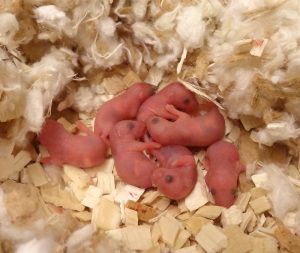New phenotype screen examines causes of neonatal death
Posted by DMDD, on 4 October 2016

This post first appeared on Annotations, the DMDD blog (blog.dmdd.org.uk).
Around a third of targeted gene knockouts in mice are embryonic-lethal. But not all deaths occur during gestation – a significant number of gene knockouts result in death at or shortly after the time of birth. Mice from these knockout lines provide a valuable animal model of human neonatal death and are the focus of a new systematic screen by the DMDD programme.
The study, to be carried out by consortium members at the Wellcome Trust Sanger Institute, will offer new insights into the genetic basis of death in neonates, complementing the efforts of large-scale human gene studies such as the DDD and UK10K.
UNDERSTANDING LETHALITY IN NEONATES
The DMDD programme studies embryonic-lethal knockout mouse lines, where lethal means that no pups are observed 14 days after birth (known as postnatal day P14). Detailed phenotyping of these lines can provide important clues about the genetic basis of human developmental disorders.
Our phenotyping efforts so far have focussed on in-utero development at embryonic days E9.5, E14.5 and E18.5 since, for the majority of embryonic-lethal lines, the embryos die well before birth.
In 5-10% of cases, however, the embryos die at the time of birth or shortly afterwards, and can provide an animal model of neonatal death due to genetic mutation. The pilot neonatal screen will study 20 of these lines during the period E18.5 to P14, gathering systematic phenotype data.

Common causes of lethality for neonates can include problems with partuition, breathing, suckling and achieving homeostasis. To understand the likely cause of death in each case, the neonatal screen will assess the pups’ gross dysmorphology, breathing, milk spot morphology (a test that reveals whether they have been able to feed), weight, measurements, locomotive skills, righting reflex (ability to correct their own body position) and blood glucose levels.
The first data is expected at the end of 2016. For more information about the DMDD programme, visit dmdd.org.uk.


 (1 votes)
(1 votes)